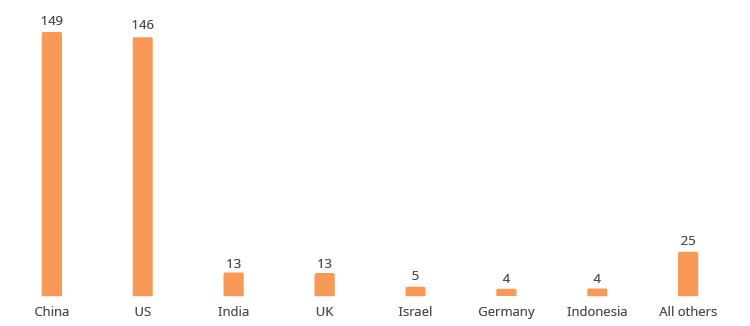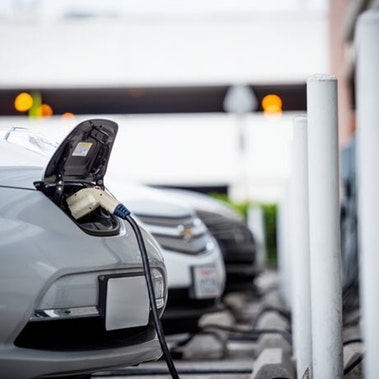By Heiko Rauscher
A version of this article ran in MIT Sloan Management Review on June 10, 2019.
For years, China was perceived as a nation that relied more on imitation and copycatting than on innovation for economic growth. It appeared to many that China was getting its best ideas from partnering with companies based elsewhere, and there continue to be frequent accusations that its manufacturers don’t respect intellectual property laws. While its high-volume, low-cost manufacturing prowess was never questioned, the line on China was that it could not compete when it came to innovation.
Those days seem to be behind us. In the 21st century, China is emerging as a leader in many new technologies — especially those related to mobility. The Chinese government has pledged to convert the nation into an international innovation leader by 2030, but in many ways China has already reached that status, certainly when it comes to electric vehicles, batteries, drones, and high-speed rail.
Today, China is not only the biggest producer of electric vehicles (EVs) by far, but also a leader in lithium-ion battery technology that powers EVs as well as smartphones and other mobile devices. Batteries are the power storage of the future as the world moves relentlessly toward the electrification of transportation. While China controls more than 60 percent of the world’s production of lithium-ion batteries and nearly half of the world’s global lithium production, it is also hard at work developing substitutes that could be cheaper and less combustible.
Drone power
On multiple fronts, Silicon Valley and other US tech hubs are evenly matched—or trailing behind—the imagination and technical prowess of Chinese companies. As one example, Chinese drone producers are ahead of competitors in the development of autonomous systems for personal mobility, according to a 2018 World Economic Forum report. A Chinese-Austrian joint venture recently debuted a pilotless air taxi in Vienna that it said it would start producing in 2020.
China also announced its intention to build a national innovation center for high-speed rail in Qingdao and has been actively exploring the trackless tram, a cross between a bus and a streetcar that runs on rubber tires. Autonomous versions of high-speed rail have also been in testing for the last two years.
According to a study by the Information Technology and Innovation Foundation, China has closed the gap with the US in areas such as patents and top universities. In some areas like supercomputers, China is pushing ahead.
What has changed in China that made this transformation possible? Probably the biggest contribution to the country’s technological surge was the strategic decision to invest heavily in research and development. Between 2000 and 2016, Chinese research and development investment grew on average 18 percent annually versus compound annual growth rates of four percent in the US and five percent in the European Union.
The Made in China 2025 initiative is at the heart of China’s transformation
Unicorn territory
Thanks to this financial commitment to innovation, China has shown a dramatic increase in both its number of patent applications and patent grants. Back in 2000, China’s number of patent applications was less than one-tenth the number in the US. By 2017, China’s applications equaled the sum of applications in the US, Japan, and the top five nations in the European Union. And since 2015, China has been the worldwide leader in patent grants, based on data from the World Intellectual Property Organization and an Oliver Wyman analysis.
More than 40 percent of global unicorns—startup companies with a valuation of more than $1 billion—were based in China in 2018, according to online technology news and analysis publisher TechCrunch. The 149 unicorns in China even beat out the 146 in the US, its closest rival.
Made in China 2025, a state-led industrial policy aimed at making China into a leader in global high-tech and heavy industrial manufacturing, has been at the heart of the nation’s transformation from copycat to innovator. The program, which involves sizable government investment in major industrial sectors and the support of startups, is aimed at turning China into an international powerhouse in such industries as automotive, aerospace, and railcar production. The program wants to mirror the success China has seen with its solar panel industry — where it has become the No. 1 producer internationally — and in its civilian drone production, which in less than a decade has come to dominate the marketplace. Dajiang Innovation Technology Co. (DJI), based in Shenzhen — the Chinese equivalent of Santa Clara, California — holds a 74 percent global market share.
The Global Count Of Unicorns, Privately Held Companies Valued At $1 Billion Or More

Source: Crunchbase news
EV leader
So far, the most progress has been made in the automotive industry where Chinese government subsidies have helped build the largest market for electric vehicles in the world. By 2020, domestic manufacturers will have the capacity to produce 20 million EVs, reflecting the enthusiasm with which entrepreneurs are greeting the challenge. The Chinese government recently put a halt on the creation of new car manufacturing startups because of this overcapacity.
At this point, the nation hasn’t started exporting EVs to the US or Europe. Even so, Chinese automakers may be better positioned than other nations to capitalize on expanding global sales. Data from the International Energy Agency show the rapid acceleration in sales of EVs: While it took about 10 years to sell the first million EVs, it took less than a year to boost sales from three million to four million and then to five million a few months after that.
For certain, China has been helped by its massive population and one of the fastest-growing middle classes in the world. This provides companies a ready-made domestic market that can support innovation and sustain high levels of production without selling overseas. The sizable domestic market allows Chinese producers to become economically viable before taking on the world market.
China Has Seen A Dramatic Rise In Patent Grants And R&D Investment
1. Direct and patent cooperation treaty national phase entries by applicant’s origin (equivalent count)
Source: WIPO, Oliver Wyman analyses
Entrepreneurial population
China also boasts a population that is highly entrepreneurial and hungry for new technology. One of the reasons for the rapid growth in Chinese ride-hailing can be attributed to the number of Chinese who seek to supplement their income by driving.
Chinese consumers also show a willingness to try new technologies. In a 2018 survey on mobility conducted by Oliver Wyman, 33 percent of Chinese respondents said they were “very likely” to switch from public transport to autonomous vehicles when they became available; 50 percent said they were “likely” to switch. That compares with only 13 percent of US respondents and 12 percent of German respondents who said they were “very likely” to switch.
For the US and Europe, the transformation of China into an innovation powerhouse means they too must increase their commitments to R&D and create favorable economic environments for collaborative innovation if they want to compete. This may mean speeding product development cycles or encouraging more joint ventures. But one thing is for sure, especially when it comes to mobility--China is moving quickly.





